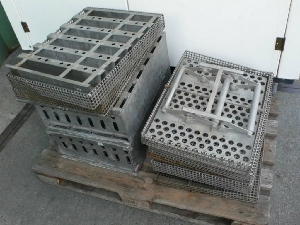Rotary Retort
At SIGMA Equipment, our team is here to help you find the right equipment to match your specific processing needs. Whether you’re looking for a single machine or a full system, we can guide you to the right rotary retort and support your project with shop services that make it easier to upgrade or build a new production line.

Surdry Single Door Horizontal Steam Oscillating Retort
Used Surdry Retort with: Model: A-176-OS Type: oscillating Capacity: 7 carts Complete with set of trays and carts Stainless steel construction Cooking and cooling operation ...

FMC Reid 610 10 Steritort Can Sterilizer Retort
Used FMC/Reid Retort with: Capacity: reels for 300, 307, 401 and 404 cans Drive: 2 Horsepower brake motor Mechanical variable speed Rated: 45 psi @ 405° Fahrenheit Quick opening single...

Stock Pilot Rotor 900 Full Immersion Rotary Retort
Used Stock Retort with: Vertical Autoclave Capacity: Liters: 400 Gallons: 105.6 Internal dimensions: Diameter: 35.4 inches Depth: 23.6 inches Working pressure: 6 bar 4...
About Rotary Retorts
For rotary retort processes, a cage is mounted in the lower (process) vessel. The upper vessel is a hot water reservoir that is preheated for the next process and is used to capture the sterile water from the previous process. The lower cage rotates during the cooking process to assist in even temperature profile and mixing of internal product. The principle behind any food sterilization or pasteurization process is to balance the key elements of temperature, pressure, time and dynamics to ensure the desired product quality and required production levels, while keeping power and raw material usage to a minimum. Using these variables, your engineers have the necessary tools to select the ideal sterilization recipe for you that will achieve your requirements in the most effective and economical way. The simplest and most effective means of storing a large part of our food supply is by canning and pouching in which preservation by heat or thermal processing is used to provide a safe and palatable product. The thermal processing of canned foods, commonly known as “cooking, retorting, or processing” is the application of heat at a specified temperature for a specified time. This operation has two fundamental purposes. The first is to produce a commercially sterile product. The product is contained in a hermetically sealed container and is subjected to heat treatment at a temperature and for a time sufficient to destroy all organisms that might adversely affect the consumer’s health. Heat treatment also destroys more resistant organisms that could produce spoilage under normal storage conditions. The second purpose is to cook the food to a point where a minimum of further preparation is necessary for its consumption.
Start Your ProjectHave more to sell? Learn about SIGMA's equipment selling solutions, including valuation, safe removal, warehousing, and targeted marketing to maximize your equipment's resale value.